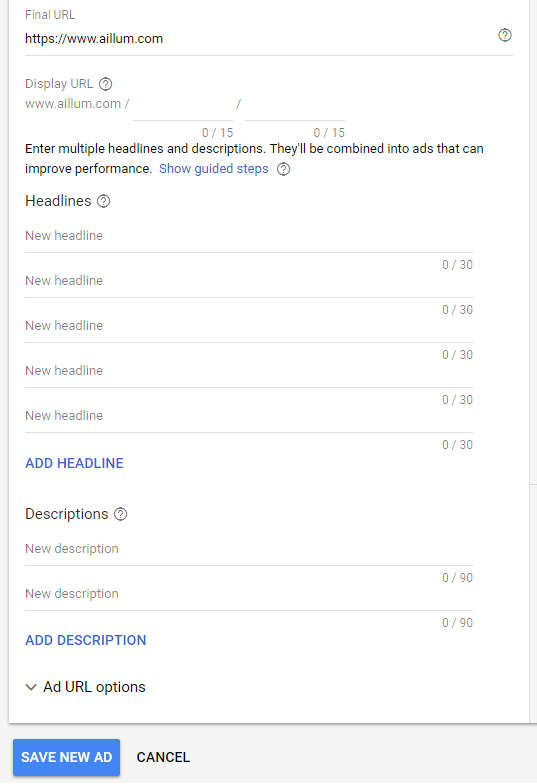As anyone who currently uses Google Ads knows, creating an effective search ad can be quite a process. Sometimes this process requires trial and error, making the ad both relevant to your customers and your keywords. More often than not, multiple variations of ads need to be tested and displayed to your customers, before discovering what works. To assist with this process, Google has began rolling out Responsive Search Ads. Currently this is still a beta feature, so more changes and tweaks will likely take place before they’re finalised.
Why so many variations?
Aside from very niche services or products, there is no “one size fits all” when it comes to creating an ad. Ads themselves are more or less required to be relevant to the keyword that they’ll display for, either in the headline or description. However, there are so many possibilities when it comes to creating these headlines and descriptions, each unique to what is being advertised. Some ads may want to push for a direct sale, others may want to simply hook new potential customers to visit the website, or aim to gain newsletter signups. Furthermore, these ads may target a specific audience, such as returning visitor (re-marketing) or specific demographics, such as only female visitors over the age of 40. Each ad can also only have one landing page, so even if ads have the same content, variations are required to select the most cost effective landing page. All of these factors play a part when creating an ad specific to your ad group.
Let Google do the heavy lifting
The new Responsive Search Ads, are effectively a catch all for variations. They provide an alternative to creating 3-10 (or more!) variations of a single ad, which can be difficult to manage and hard to accurately measure performance. Instead, these responsive ads allow up to 15 individual headlines, along with up to 4 individual descriptions. This may initially seem like overkill, considering an ad will at most, only show 3 headlines and 2 descriptions. However, Google will be using and test machine learning specifically for your ad, to get the best performance out of it. Machine learning works by displaying variations of your ad, and learning for you what works, and what does not, based on performance metrics and calculation algorithms, which when repeated, improves performance over time.

These ads can be very powerful when provided with 15 headlines and 4 descriptions. Assuming the ad displays 2 headlines and 1 description (the standard display for any ad), this would give around 420 different combinations of headlines/descriptions to display. A single ad managing this is much more efficient than managing 420 slightly tweaked ads (and how they perform) manually.
Maintain a degree of control
When creating these responsive search ads, you may worry about a certain lack of control over them. Thankfully, there are methods to add some rigid parameters to your ads. This can be useful in the event that you wish to test an ad that must use a specific headline at all times, or have valuable information in a description that you want everyone to see in every ad variation. Responsive ads come with a “pin” option, just for this.

These ads come with the optional ability to pin a specific headline or description into slot 1 or 2 for headlines, and slot 1 for descriptions. When pinned, these headlines and/or descriptions will appear in every single variation that shows on Google’s search network. One last thing to keep in mind that as a beta feature, do closely monitor the performance of these ads after they are live, as the feature is subject to tweaks and changes as Google improves it.




